Hongwen Yang
Spectral Efficiency Maximization for DMA-enabled Multiuser MISO with Statistical CSI
Jun 11, 2025Abstract:Dynamic metasurface antennas (DMAs) offer the potential to achieve large-scale antenna arrays with low power consumption and reduced hardware costs, making them a promising technology for future communication systems. This paper investigates the spectral efficiency (SE) of DMA-enabled multiuser multiple-input single-output (MISO) systems in both uplink and downlink transmissions, using only statistical channel state information (CSI) to maximize the ergodic sum rate of multiple users. For the uplink system, we consider two decoding rules: minimum mean square error (MMSE) with and without successive interference cancellation (SIC). For both decoders, we derive closed-form surrogates to substitute the original expressions of ergodic sum rate and formulate tractable optimization problems for designing DMA weights. Then, a weighted MMSE (WMMSE)-based algorithm is proposed to maximize the ergodic sum rate. For the downlink system, we derive an approximate expression for the ergodic sum rate and formulate a hybrid analog/digital beamforming optimization problem that jointly optimizes the digital precoder and DMA weights. A penalty dual decomposition (PDD)-based algorithm is proposed by leveraging the fractional programming framework. Numerical results validate the accuracy of the derived surrogates and highlight the superiority of the proposed algorithms over baseline schemes. It is shown that these algorithms are effective across various DMA settings and are particularly well-suited for system design in fast time-varying channels.
Uplink Sum Rate Maximization for Pinching Antenna-Assisted Multiuser MISO
Apr 23, 2025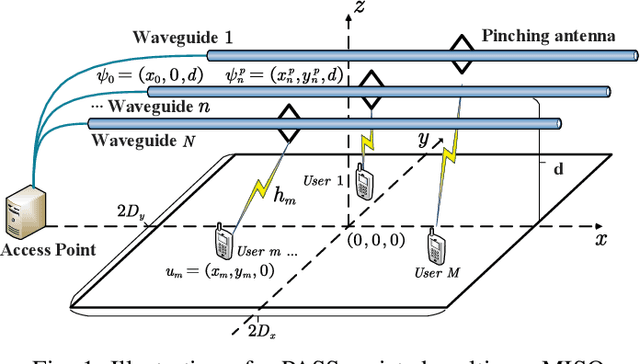
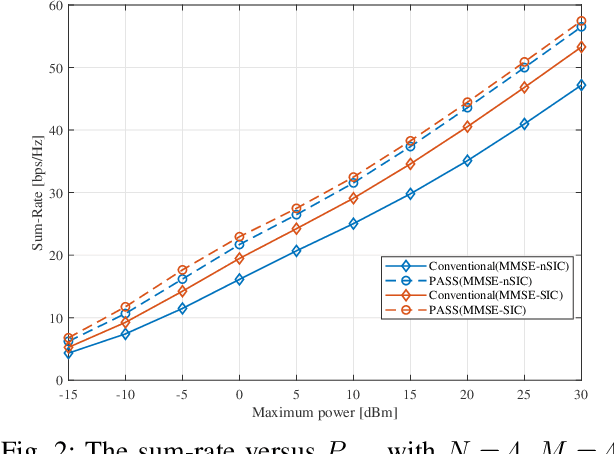
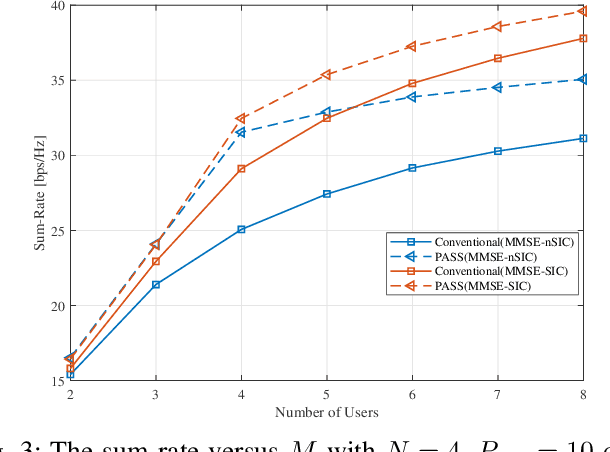
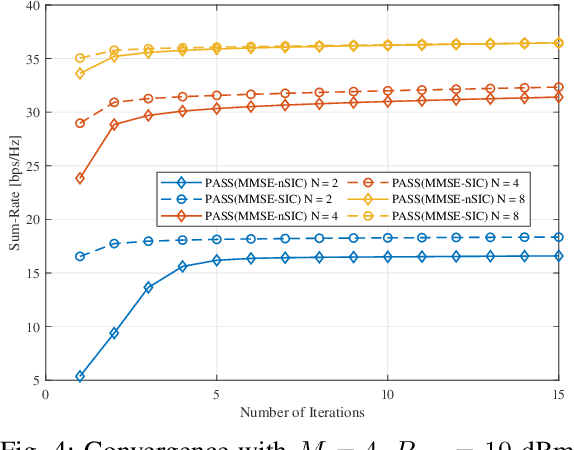
Abstract:This article investigates the application of pinching-antenna systems (PASS) in multiuser multiple-input single-output (MISO) communications. Two sum-rate maximization problems are formulated under minimum mean square error (MMSE) decoding, with and without successive interference cancellation (SIC). To address the joint optimization of pinching antenna locations and user transmit powers, a fractional programming-based approach is proposed. Numerical results validate the effectiveness of the proposed method and show that PASS can significantly enhance uplink sum-rate performance compared to conventional fixed-antenna designs.
DGoT: Dynamic Graph of Thoughts for Scientific Abstract Generation
Mar 26, 2024Abstract:The method of training language models based on domain datasets has obtained significant achievements in the task of generating scientific paper abstracts. However, such models face problems of generalization and expensive training costs. The use of large language models (LLMs) to solve the task of generating paper abstracts saves the cost of model training. However, due to the hallucination problem of LLM, it is often necessary to improve the reliability of the results through multi-round query prompt approach such as Graph of Thoughts (GoT), which also brings additional reasoning costs. In this paper, we propose a Dynamic Graph of Thought (DGoT). It not only inherits the advantages of the existing GoT prompt approach, but also dynamically adjust the graph structure according to data characteristics while reducing model reasoning cost. Experimental results show that our method's cost-effectiveness in abstract generation tasks is only 43.7% to 56.4% of other multi-round query prompt approaches. Our code is available at https://github.com/JayceNing/DGoT.
Sum-Rate Optimization for RIS-Aided Multiuser Communications with Movable Antenna
Nov 11, 2023Abstract:Reconfigurable intelligent surface (RIS) is known as a promising technology to improve the performance of wireless communication networks, which has been extensively studied. Movable antenna (MA) is a novel technology that fully exploits the antenna position for enhancing the channel capacity. In this paper, we propose a new RIS-aided multiuser communication system with MAs. The sum-rate is maximized by jointly optimizing the beamforming, the reflection coefficient (RC) values of RIS and the positions of MAs. A fractional programming-based iterative algorithm is proposed to solve the formulated non-convex problem, considering three assumptions for the RIS. Numerical results are presented to verify the effectiveness of the proposed algorithm and the superiority of the proposed MA-based system in terms of sum-rate.
Secure Antenna Selection and Beamforming in MIMO Systems
Feb 22, 2023


Abstract:This work proposes a novel joint design for multiuser multiple-input multiple-output wiretap channels. The base station exploits a switching network to connect a subset of its antennas to the available radio frequency chains. The switching network and transmit beamformers are jointly designed to maximize the weighted secrecy sum-rate for this setting. The principal design problem reduces to an NP-hard mixed-integer non-linear programming. We invoke the fractional programming technique and the penalty dual decomposition method to develop a tractable iterative algorithm that effectively approximates the optimal design. Our numerical investigations validate the effectiveness of the proposed algorithm and its superior performance compared with the benchmark.
Revealing the Impact of SIC in NOMA-ISAC
Feb 07, 2023Abstract:The impact of successive interference cancellation (SIC) in non-orthogonal multiple access integrated sensing and communications (NOMA-ISAC) is analyzed. A two-stage SIC-based framework is proposed to deal with the inter-communication user and inter-functionality interferences. The performance of sensing and communications (S\&C) is analyzed for two SIC orders, i.e., the communications-centric SIC and the sensing-centric SIC. For each design, diversity orders, high signal-to-noise ratio (SNR) slopes, and high-SNR power offsets of the sensing rate (SR) and communication rate (CR) are derived as insights. Analytical results indicate that i) the main influence of SIC order on the SR and CR lies in the high-SNR power offsets; ii) ISAC provides more degrees of freedom than frequency-division S\&C (FDSAC). Numerical results show that the SR-CR region of ISAC entirely covers that of FDSAC.
Statistical-CSI-Based Antenna Selection and Precoding in Uplink MIMO
Dec 28, 2022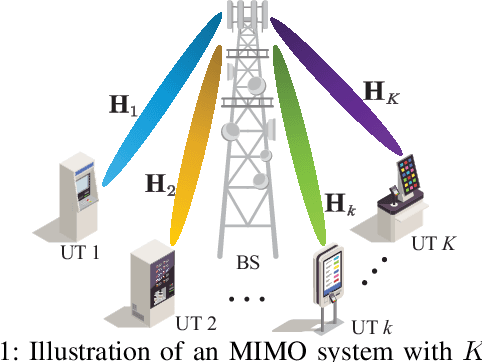

Abstract:Classical antenna selection schemes require instantaneous channel state information (CSI). This leads to high signaling overhead in the system. This work proposes a novel joint receive antenna selection and precoding scheme for multiuser multiple-input multiple-output uplink transmission that relies only on the long-term statistics of the CSI. The proposed scheme designs the switching network and the uplink precoders, such that the expected throughput of the system in the long term is maximized. Invoking results from the random matrix theory, we derive a closed-form expression for the expected throughput of the system. We then develop a tractable iterative algorithm to tackle the throughput maximization problem, capitalizing on the alternating optimization and majorization-maximization (MM) techniques. Numerical results substantiate the efficiency of the proposed approach and its superior performance as compared with the baseline.
Joint Receive Antenna Selection and Beamforming in RIS-Aided MIMO Systems
Dec 28, 2022


Abstract:This work studies a low-complexity design for reconfigurable intelligent surface (RIS)-aided multiuser multiple-input multiple-output systems. The base station (BS) applies receive antenna selection to connect a subset of its antennas to the available radio frequency chains. For this setting, the BS switching network, uplink precoders, and RIS phase-shifts are jointly designed, such that the uplink sum-rate is maximized. The principle design problem reduces to an NP-hard mixed-integer optimization. We hence invoke the weighted minimum mean squared error technique and the penalty dual decomposition method to develop a tractable iterative algorithm that approximates the optimal design effectively. Our numerical investigations verify the efficiency of the proposed algorithm and its superior performance as compared with the benchmark.
On the Performance of Downlink MIMO-ISAC
Sep 02, 2022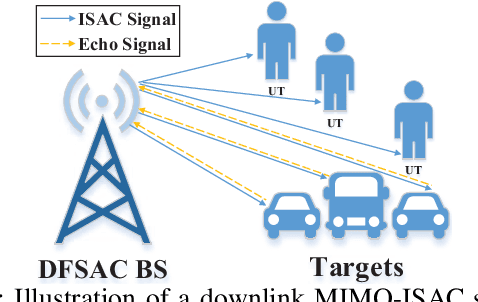
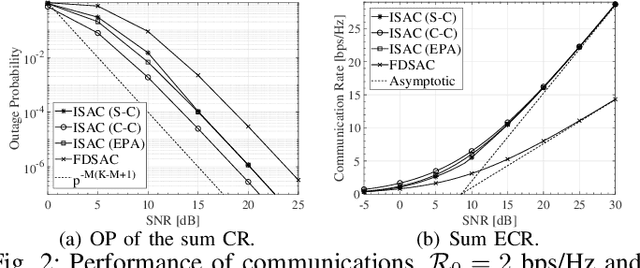
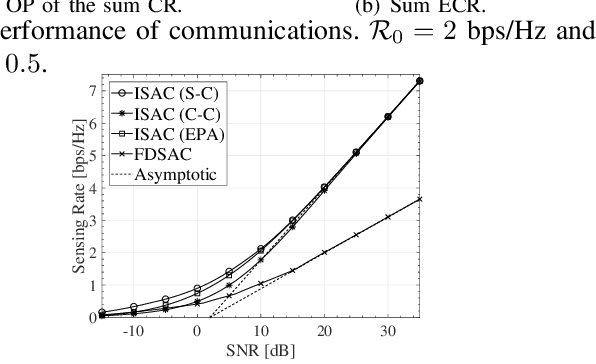
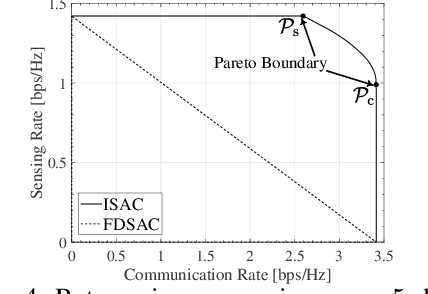
Abstract:This letter analyzes the performance of sensing and communications (S\&C) achieved by a multiple-input multiple-output downlink integrated S\&C (ISAC) system. Three typical ISAC scenarios are studied, including the sensing-centric design, communications-centric design, and Pareto optimal design. For each scenario, diversity orders and high signal-to-noise ratio slopes of the sensing rate and communication rate are derived to gain further insights. It is found that ISAC can provide more degrees of freedom and a broader rate region than existing frequency-division S\&C (FDSAC) techniques.
Integrated Sensing and Communications: A Mutual Information-Based Framework
Aug 08, 2022



Abstract:Integrated sensing and communications (ISAC) is potentially capable of circumventing the limitations of existing frequency-division sensing and communications (FDSAC) techniques. Hence, it has recently attracted significant attention. This article aims to propose a unified analytical framework for ISAC from a mutual information (MI) perspective. Based on the proposed framework, the sensing performance and the communication performance are evaluated by the sensing MI and the communication MI, respectively. The unity of this framework is originated from the fact that the sensing and communication (S\&C) performance metrics, i.e., the S\&C MI, have the similar physical and mathematical properties as well as the same unit of measurement. Based on this framework, the S\&C performance of downlink and uplink ISAC systems is investigated and compared with that of FDSAC systems. Along each considered system settings, numerical results are provided to demonstrate the superiority of ISAC over conventional FDSAC designs. Finally, promising open research directions are provided in the context of MI-based ISAC.
 Add to Chrome
Add to Chrome Add to Firefox
Add to Firefox Add to Edge
Add to Edge